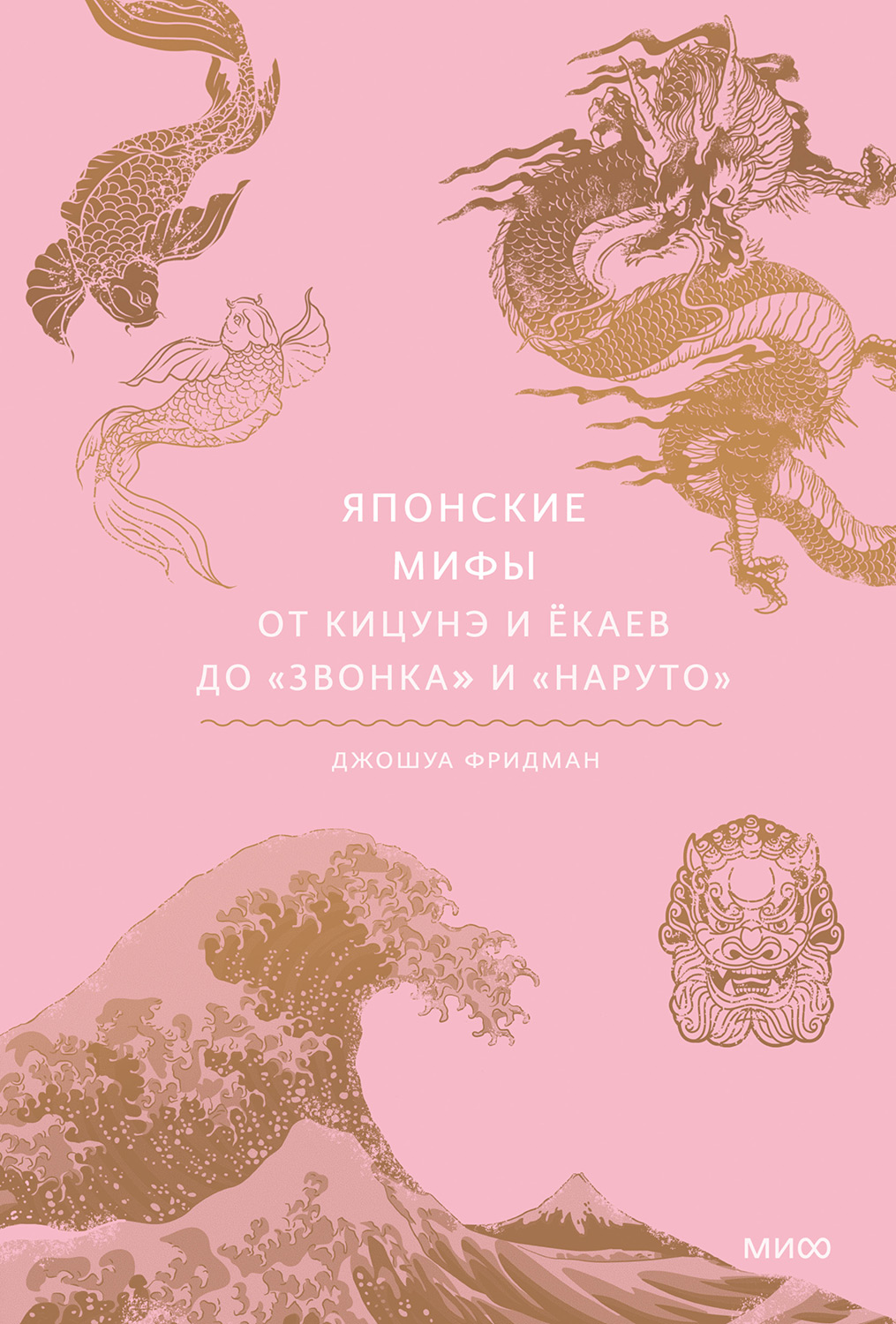Японские мифы. От кицунэ и ёкаев до «Звонка» и «Наруто» - Джошуа Фридман

Помощь проекту
Японские мифы. От кицунэ и ёкаев до «Звонка» и «Наруто» читать книгу онлайн
11. ‘Canon Foreigner’. TV Tropes — the All-Devouring Pop Culture Wiki. TV Tropes. Web: 10 November 2020. https://tvtropes.org/pmwiki/pmwiki.php/Main/CanonForeigner
12. Carrithers, Michael. Buddha: A Very Short Introduction. Oxford: Oxford University Press, 2007.
13. Como, Michael I. Shōtoku: Ethnicity, Ritual and Violence in the Japanese Buddhist Tradition. Oxford: Oxford University Press, 2008.
14. ‘Constitution of Japan’. Office of the Prime Minister of Japan and His Cabinet. http://japan.kantei.go.jp/constitution_and_government_of_japan/constitution_e.html
15. Cranston, Edwin A. A Waka Anthology, Volume One: The Gem-Glistening Cup. Stanford, California, USA: Stanford University Press, 1993.
16. Duthie, Torquil. Man’yōshū and the Imperial Imagination in Early Japan. Leiden: Brill, 2014.
17. Farris, William Wayne. Japan to 1600: A Social and Economic History. Honolulu: University of Hawai’i Press, 2009.
18. Faure, Bernard. Gods of Medieval Japan, Volume 1: The Fluid Pantheon. Honolulu: University of Hawai’i Press, 2016.
19. Faure, Bernard. Gods of Medieval Japan, Volume 2: Protectors and Predators. Honolulu: University of Hawai’i Press, 2016.
20. Foster, Michael Dylan. ‘The Metamorphosis of the Kappa: Transformation from Folklore to Folklorism in Japan’. Asian Folklore Studies, vol. 57 no. 1 (1998).
21. Foster, Michael Dylan. Pandemonium and Parade: Japanese Monsters and the Culture of Yokai. Berkeley: University of California Press, 2008.
22. Foster, Michael Dylan. The Book of Yokai: Mysterious Creatures of Japanese Folklore. Berkeley: University of California Press, 2015. Amazon Kindle Edition.
23. Frasier, Lucy. ‘Lost Property Fairy Tales: Ogawa Yōko and Higami Kumiko’s Transformations of ‘The Little Mermaid.’’ Marvels and Tales, vol. 27, no. 2 (2013). 181–93.
24. Gardner, Daniel K. Confucianism: A Very Short Introduction. Oxford: Oxford University Press, 2014.
25. Glassman, Hank. The Face of Jizō: Image and Cult in Medieval Japanese Buddhism. Honolulu: University of Hawai’i Press, 2012.
26. Hardacre, Helen. ‘Creating State Shinto: The Great Promulgation Campaign and the New Religions’. Journal of Japanese Studies, vol. 12 no. 1 (1986). 29–63.
27. Hodge, Stephen. The Mahā-Vairocana-Abhisambodhi Tantra: With Buddhaguhya’s Commentary. London: Routledge, 2003.
28. Holmes, Yoshihiko. ‘A Chronological Evolution of the Urashima Tarō Story and its Interpretations’. Victoria University of Wellington, 2014. M.A. Thesis.
29. Hudson, Mark. Ruins of Identity: Ethnogenesis in the Japanese Islands. Honolulu: University of Hawai’i Press, 1999.
30. Inagaki, Hisao. Three Pure Land Sutras. Berkeley, California, USA: Numata Center for Buddhist Translation and Research, 2003.
31. Janssen, Marius B. The Making of Modern Japan. Cambridge, Massachusetts, USA: Harvard University Press, 2000. Amazon Kindle Edition.
32. Japanese Architecture and Art Net User System. Ed. by Parent, Mary Neighbor. http://www.aisf.or.jp/~jaanus/
33. Keenan, Linda Klepinger. ‘En the Ascetic’. Religions of Japan in Practice. Ed. by Lopez, David S. Princeton, New Jersey, USA: Princeton University Press, 1999.
34. Keown, Damien. Buddhism: A Very Short Introduction. Oxford: Oxford University Press, 2013.
35. Kitagawa, Joseph M. ‘The Career of Maitreya, with Special Reference to Japan’. History of Religions, vol. 21 no. 2 (1981). 107–25.
36. Kuribara, Hisashi. ‘Hitobito wotanoshimaseru Akagiyama no miryoku 2: Akagiyama wo meguru densetsu to sono rūtsu no kōsatsu’. Tōkyō fukushi daigaku daigakuin kiyō, vol. 4 no. 2 (March 2014).
37. Laozi. Dao De Jing: The Book of the Way. Trans. by Moss Roberts. Berkeley, California, USA: University of California Press, 2001.
38. Lee, Junghee. ‘The Origins and Development of the Pensive Bodhisattva Images of Asia’. Artibus Asiae, vol. 53 no. 3/4 (1993). 311–57.
39. Le Febvre, Jesse R. ‘Christian Wedding Ceremonies: ‘Nonreligiousness’ in Contemporary Japan’. Japanese Journal of Religious Studies, vol. 42 no. 2 (2015). 185–203.
40. Lunning, Frenchy and Freeman, Crispin. ‘Giant Robots and Superheroes: Manifestations of Divine Power, East and West’. Mechademia, vol. 3 (2008). 274–82.
41. Miller, Laura. ‘Extreme Makeover for a Heian Era Wizard’. Mechademia, vol. 3 (2008).
42. Ministry of Land, Infrastructure, Transport and Tourism. ‘Land and Climate of Japan’. https://www.mlit.go.jp/river/basic_info/english/land.html Accessed June 04, 2020.
43. Nakajima, Michio. ‘Shinto Deities that Crossed the Sea: Japan’s ‘Overseas Shrines’ 1868–1945, Japanese Journal of Religious Studies, vol. 37 no. 1 (2010). 21–46.
44. Nihonshoki 1–3. Ed. by Kojima, Noriyuki, et. al. Shinpen Nihon koten bungaku zenshū, vols. 2–4 (1994).
45. Ō no Yasumaro. The Kojiki: an Account of Ancient Matters. Trans. By Gustav Heldt. New York: Columbia University Press, 2014.
46. O’Dwyer, Shaun. ‘The Yasukuni Shrine and the Competing Patriotic Pasts of East Asia’. History and Memory, vol. 22 no. 2 (2010). 147–77.
47. Oxford English Dictionary Online, Oxford University Press, June 2020, www.oed.com
48. Oyler, Elizabeth. Swords, Oaths and Prophetic Visions: Authoring Warrior Rule in Medieval Japan. Honolulu: University of Hawai’i Press, 2015.
49. Piggott, Joan R. The Emergence of Japanese Kingship. Stanford, California, USA: Stanford University
50. Press, 1997.
51. Power, Natsu Onoda. God of Comics: Osamu Tezuka and the Creation of Post-World War II Manga. Jackson, Mississippi, USA: University Press of Mississippi, 2009.
52. Rambelli, Fabio. ‘Before the First Buddha: Medieval Japanese Cosmogony and the Quest for the Primeval Kami’. Monumenta
53. Nipponica, vol. 64 no. 2 (2009). The Sea and the Sacred in Japan. London: Bloomsbury Academic, 2018. Amazon Kindle Edition.
54. Reider, Noriko T. ‘A Demon in the Sky: The Tale of Amewakahiko, a Japanese Medieval Story’. Marvels and Tales, vol. 29 no. 2 (2015). 265–82.
55. Japanese Demon Lore: Oni from Ancient Times to the Present. Logan, Utah, USA: Utah State University Press, 2015.
56. Roemer, Michael K. ‘Thinking of Ancestors (and Others) at Japanese Household Altars’. Journal of Ritual Studies, vol. 26 no. 1 (2012). 33–45.
57. Saitō, Hideki, and Premoselli, Giorgio. ‘The Worship of Gozu Tennō and the Ritual World of the Izanagi-ryū’. Cahiers d’Extreme-Asie, vol. 21 (2012). 277–301.
58. Scheid, Bernhard. ‘Shōmu Tennō and the Deity from Kyushu: Hachiman’s Initial Rise to Prominence’. Japan Review, no. 27 (2014). 31–51.
59. Shigeta, Shin’ichi, and Thompson, Luke. ‘Onmyōdō and the Aristocratic Culture of Everyday Life in Heian Japan’. Cahiers d’Extreme-Asie, vol. 21 (2012). 65–77.
60. Smyers, Karen. A. ‘’My Own Inari:’ Personalization of the Deity in Inari Worship’. Japanese Journal of Religious Studies, vol. 23 no. 1/2 (1996). 85–116.
61. Sundberg, Steve. ‘Shirokiya Department Store, c. 1910–1940’. Old Tokyo. http://www.oldtokyo.com/shirokiyadepartment-store/ Accessed September 30, 2020.
62. Teeuwen, Mark. ‘Attaining Union with the Gods: The Secret Books of Watarai Shinto’. Monumenta Nipponica, vol. 48 no. 2 (1993). 225–45.
63. Teiser, Stephen F. The Ghost Festival in Medieval China. Princeton, New Jersey, USA: Princeton University Press, 1988.
64. Thakur, Yoko H. ‘History Textbook Reform in Allied Occupation Japan, 1945–52’. History of Education Quarterly, v. 35,

























